Preschoolers are fast learners because they are energetic and curious to get answers about anything they see or hear. Parents and caregivers should use this never-ending curiosity to help them learn letters and letter sounds.
Parents can create simple preschool activities to assist their child in learning the alphabet in a conducive environment that makes learning fun, easy and stress-free.
A Multi-Sensory Approach to Learning
Teaching your child from simple black and white flashcards or just saying the names of letters over and over can get redundant and boring for your child. If you don’t make the activities fun, your preschooler won’t want to take the time to learn!
Every child also has their own style of learning. Some children may learn best while jumping up and down, feeling objects with their fingers, or listening to a song.
When people take in new information through their ears or eyes or skin, those neurons talk to each other by firing off electrical pulses. This impulse activity is called brain waves.
By adding music or movement to a cognitive memory task, the child gives the brain some additional things to “think” about and pay attention to, waking up multiple parts of the brain, rather than the brain being distracted by mental “static” that is typically present.
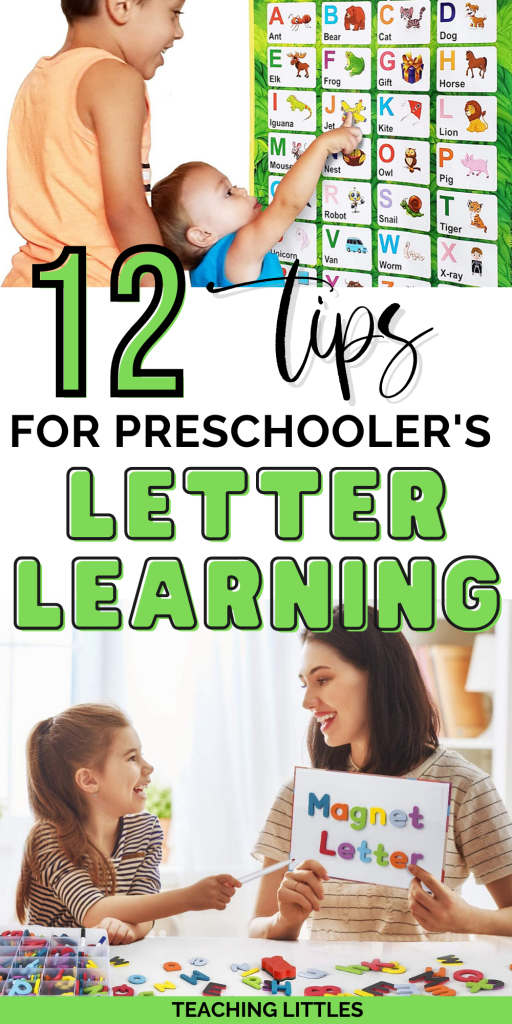
Tips to Help Your Preschooler Learn Letters and Letter Sounds
The activities below incorporate various ways using sensory modalities, music, printables, and more to develop the stimulation to get your preschooler to learn letters and letter sounds.
As you’re doing these activities and teaching your child letters, be sure that you’re telling them what sound the letter makes and have them repeat it back to you each time.
You’ll be amazed at how quickly they catch on to learning letters once they’re given the right tools in a fun environment.
1. Sing alongs
It’s amazing how people remember their childhood sing-along songs in old age. Singing is known to release endorphins in the brain that make a person have an uplifted mood and spirit.
Not only that, but singing can help to improve memory of a certain concept or skill.
Children love singing and when an adult helps them sing, they feel appreciated, especially if they are learning a new song.
The parent can create a sweet ABC song or download one online and teach the child. The most typical song that they’re learn early on is the standard ABC song.
Once they’ve got all the letters down, they can move on to more complex songs with the letter sounds or even words attached.
In the song, the sounds of the letters should be as clear as possible, ensuring that the child hears their sound clearly. YouTube has some great ABC song renditions like this one from ABC Mouse.
2. Make it a game
Children are energetic and would love to play games with their peers or adults. You can choose a child’s favorite game and incorporate the alphabet in it.
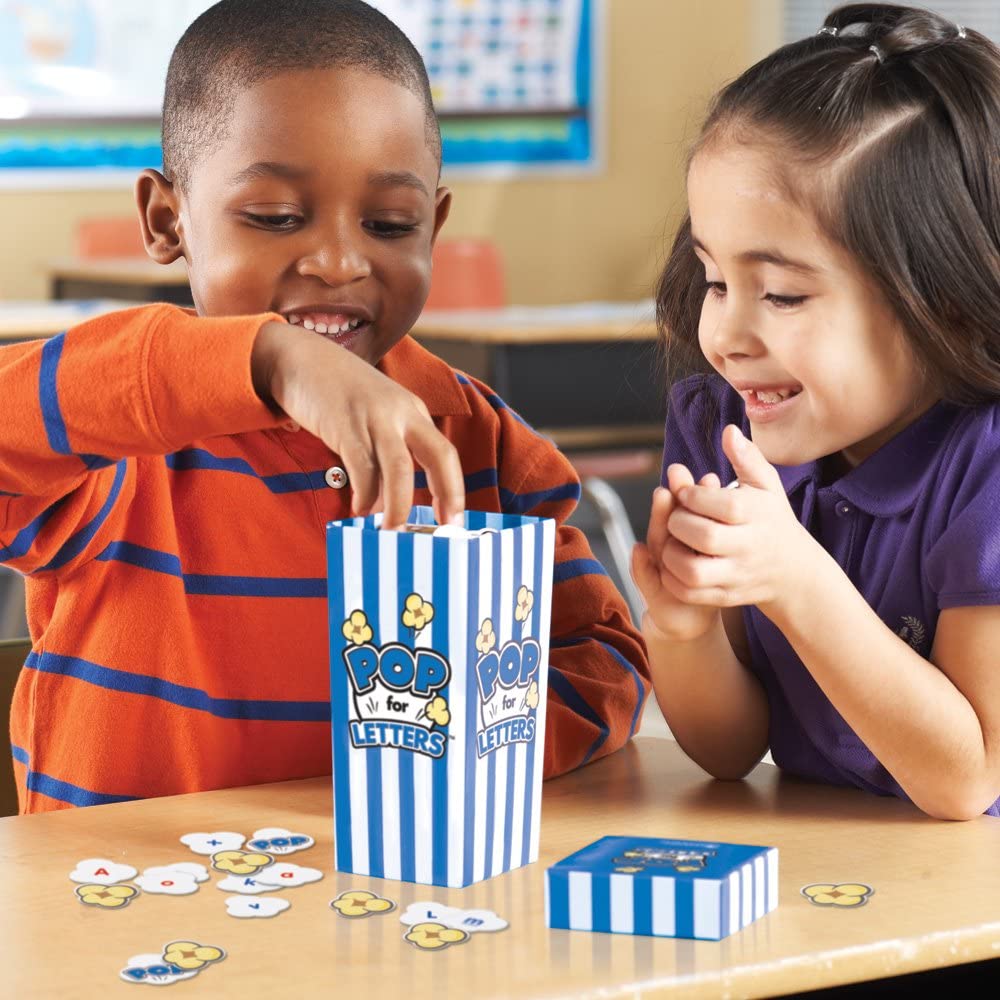
There are many letter games for preschoolers that will keep them entertained and learning. Some of my kid’s favorites are:
- Learning Resources Pop for Letters: Match
- Alphabet Slap Jack: helps your child learn their upper and lowercase ABCs while playing a fun card game like Alphabet SlapJack, ABC Go Fish, and Find My Letter Matching game.
- Magnetic Fish Letters: Not only can kids practice motor skills by guiding the fishing line to the eye of the fish to pick it up, each colored fish has an uppercase & lowercase letter on it.
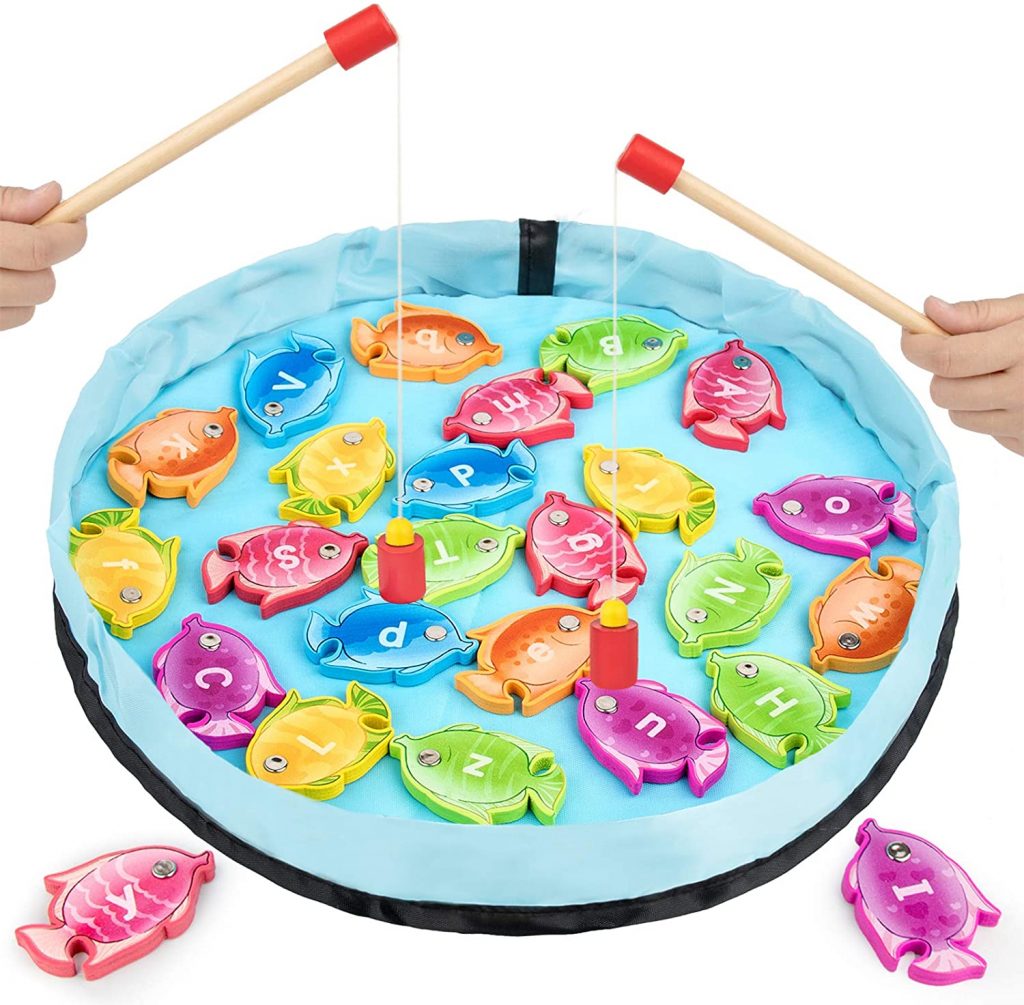
Here are some fun and simple activities and games that you can make with simple household items to help your preschooler learn letters:
- Clothespin Letter Match
- Fishing for Letters in a Baby Pool
- Erasing Letters on a Dry Erase Board
- Sticker Letters Activity
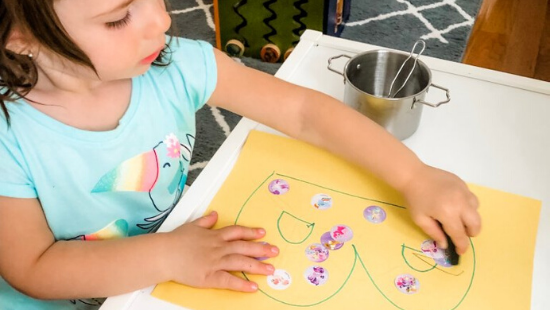
3. Use Charts
The ABC chart is useful when teaching preschoolers because it contains the letter and a creature or item whose name starts with a specific letter. They help the child recognize the letter and hear the corresponding sound.
A picture next to a letter will help the child connect the sound with the letter. There are several ways that you can use the chart to teach your child.
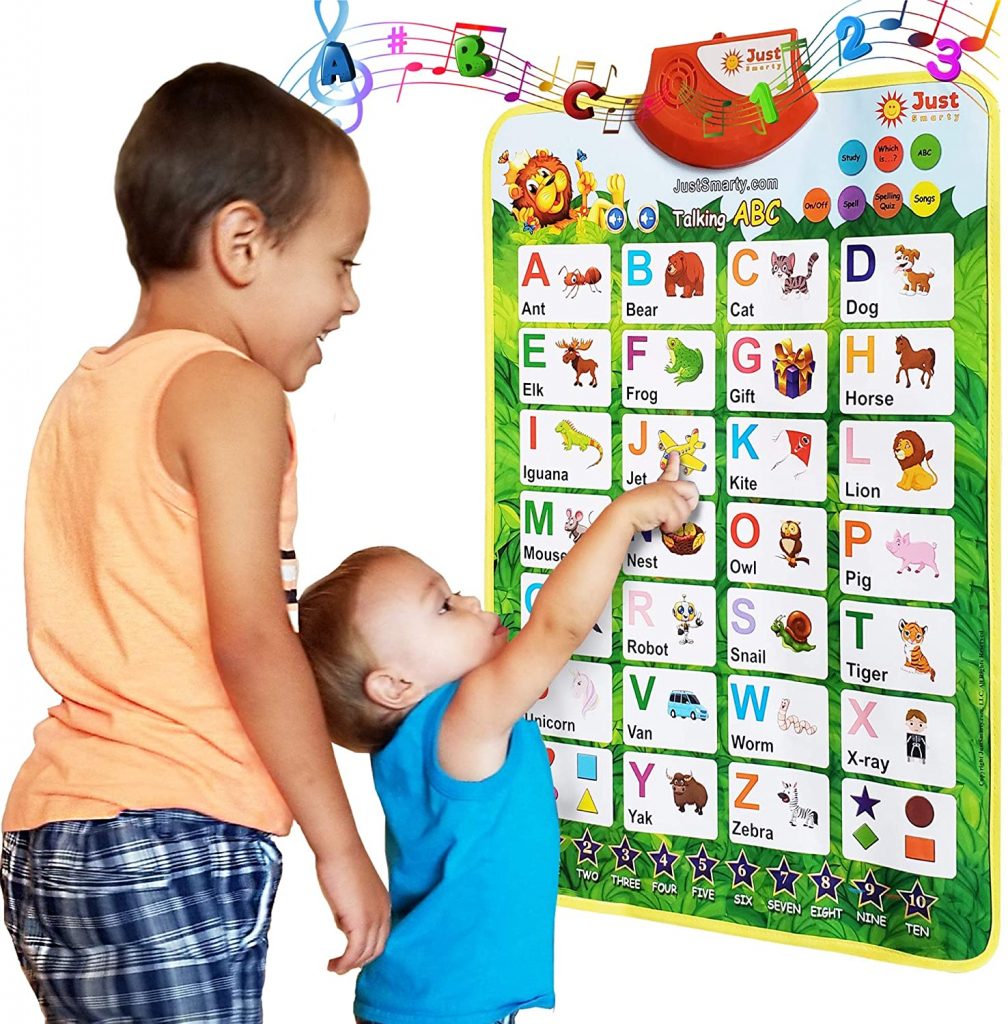
This interactive letter chart lets you tap on a letter and speak its sound, then point at the image that corresponds with the letter and speak the name of the image.
If you point at letter G and the corresponding image is a girl, first, let the child hear the sound of the letter several times.
Ask them to repeat the sound after you and then show them the image and read the word slowly.
4. Practice Erasing, Tracing, Imitating, Copying, and Writing Letters
Your child will first learn to trace letters, then comes imitating (you writing them first while they watch and repeat), copying (having them write the letters from jut seeing it on another paper), and writing from memory.
Writing will of course be hardest so start with having them trace the letters first. My First Learn-to-Write Workbook is great for getting this started.
They can trace all the letters and prewriting strokes before they start writing them on their own.
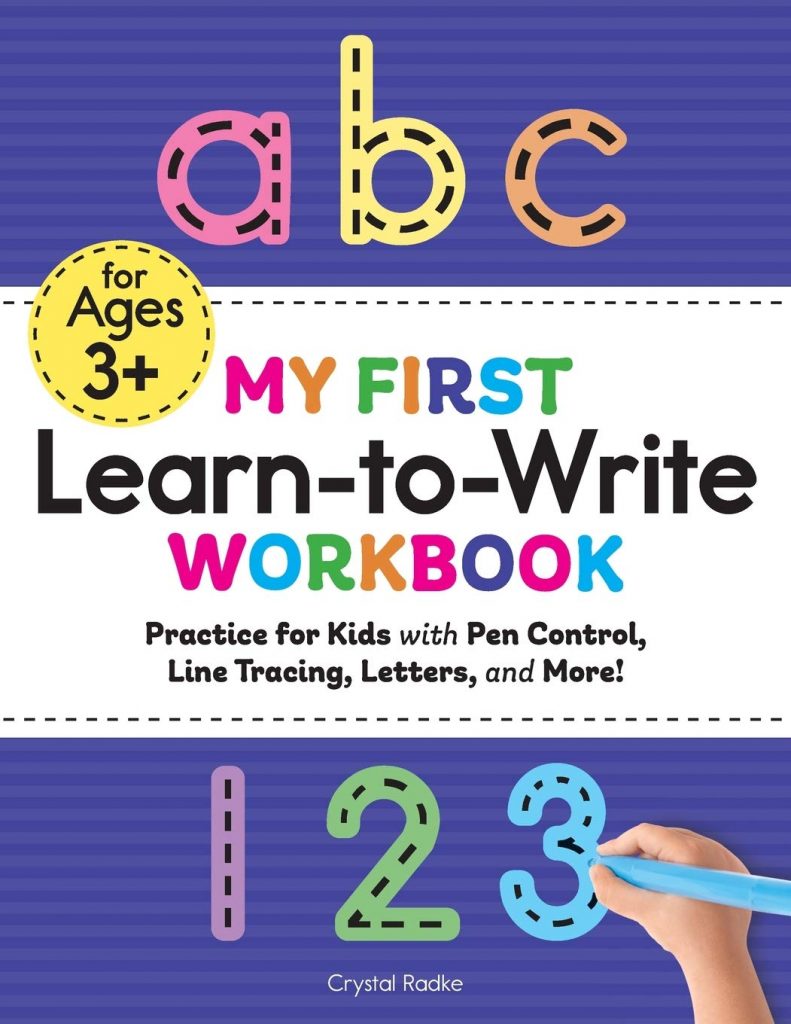
Make sure you’re saying the letter and the sound to them as they trace and write.
Once they’re ready to imitate and copy from scratch, ensure you write large letters in caps as your child watches you write and speak the sound.
After you have clearly written the letter, hold your book up and let your child see what you have written, then read the voice of the letter to him or her.
If you continually write and read the letter sounds, your child will be able to associate the sound with the letter as they grow.
If your preschooler doesn’t have enough fine motor control yet to write letters on their own, have them start with erasing them on a dry erase board. This activity doesn’t require as much precision as writing does.
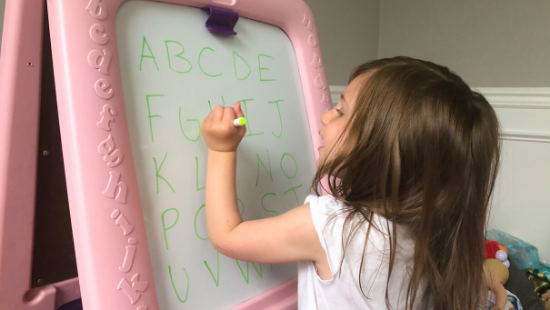
Simply draw the letters on a dry erase board yourself, and have your child erase the letter as you name it.
5. Read
Any child who frequently hears their parent or caretaker read to them will likely develop the habit of reading even after they reach adulthood. They will remember and begin teaching the same habit to their children.
There are different ways to help your child recognize the letters and associate their sounds while reading.
- Use your finger to follow the words on the page so they start to associate the letters with what you’re saying
- Point out letters to them everywhere: on cereal boxes, on street signs, on banners, and on snack bags
- When talking about a letter, always tell them the sound that it makes and a word that has this letter as its starter. For example M: say M says mmm for mom. Always have them repeat you to etch it into their memory.
As you read, you can involve the child and help them activate their imagination. Be sure to keep asking them what a letter is and the sound as you read.
Related Post: The Benefits of Reading to Young Children
6. Match uppercase and lower case letters
Each of the alphabet letters has an upper and lowercase. The children may be confused if they are used to the uppercase only, and then suddenly you show them a lower case letter expecting them to recognize it.
Therefore, you want them to look at both uppercase and lowercase letters when learning.
The lowers case letters are the ones that they will see more often when they read or see words so they are actually more important.

Once they begin learning, let them practice matching the letters. You can use any of the above methods (charts, games, reading, writing) to teach them to match the letters.
Try the clothespin letter matching activity with household materials or these free printable letter matching games (snowman and mittens) as well.
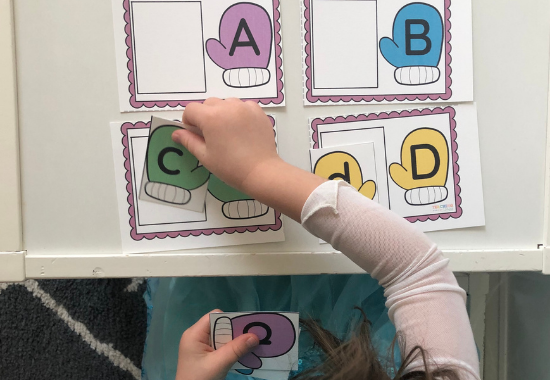
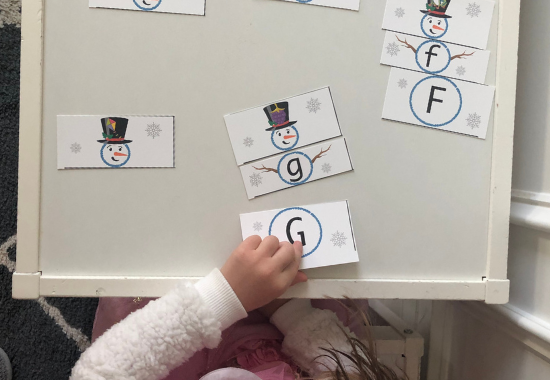
Always remember to encourage them even when they get the answer wrong because the main purpose here is to help your preschooler learn. You can also have some snacks as an incentive so that your child does not get bored.
7. Use Puzzles

Puzzles are a great activity for fine and visual motor skills (hand-eye coordination). Having to fit a piece into it’s correct spot by turning and manipulating it is great for visual-spatial awareness.
Not only that, but they are great for learning letters. You can find puzzles that have your child match upper and lowercase letters (like the one shown above) or simple alphabet inset puzzles.
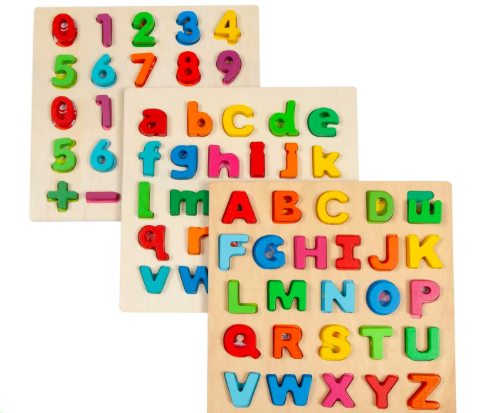
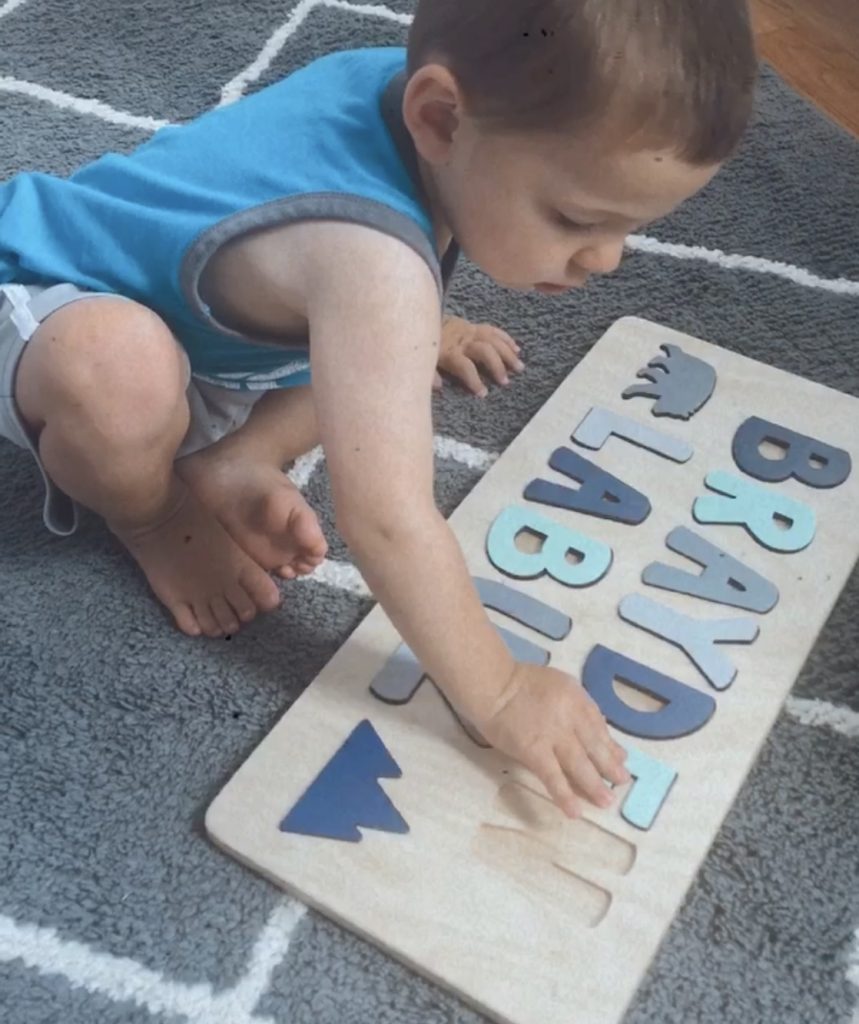
These name puzzles are also a great way to get your child learning the letters of their name. They’ll love playing with the puzzle as they start to recognize the letters they see all the time.
8. Use Magnets
Letter magnets are a fun toy for kids. This magnetic activity is almost like a puzzle where you child can fit the letters into the cards to learn their letters.
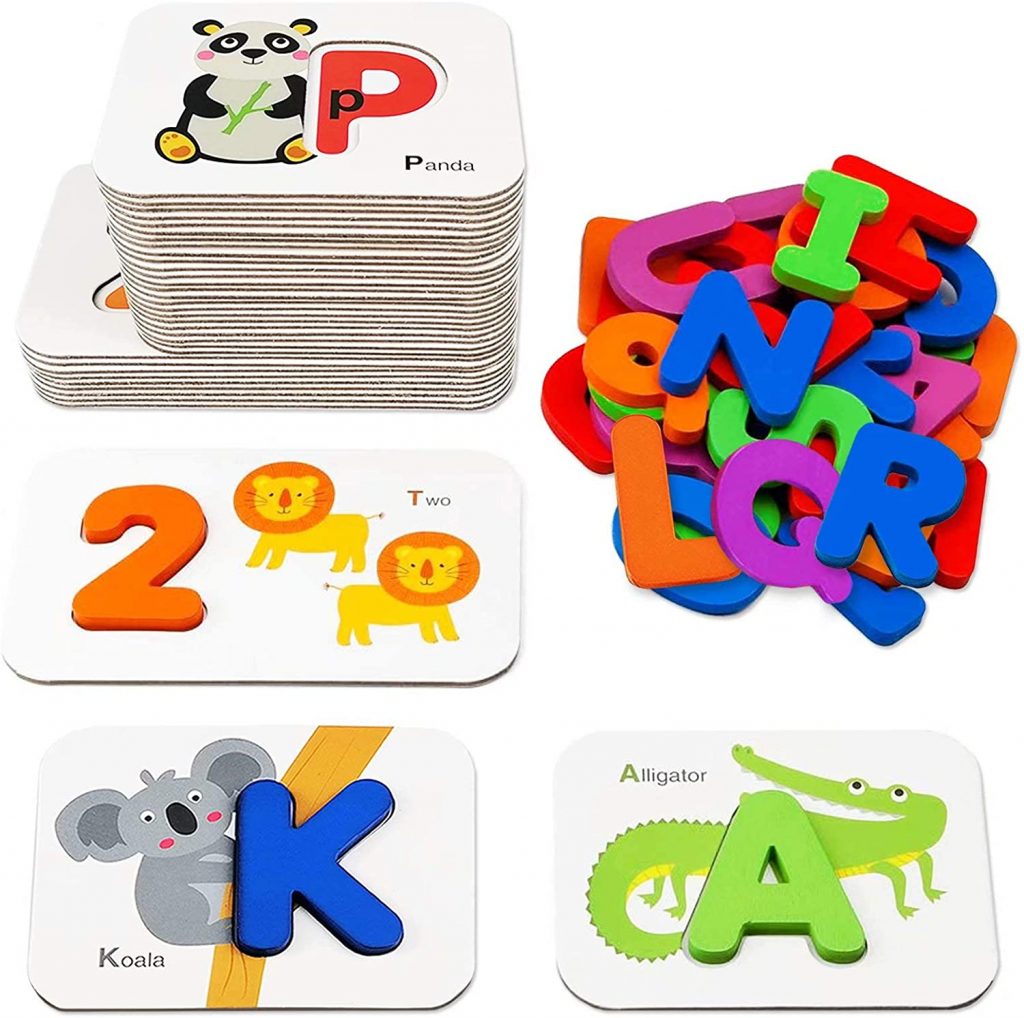
You can also use letter magnets to make short words, spell their name, or place on the refrigerator or oven. There are so many possibilities to do with letter magnets and they’re a great activity for learning letters.
9. Work on One Letter at a Time
You can pick a letter of the week and do these activities several times with the same letter. This will ensure that they really retain the letters that they’re learning.
Once you’re confident that they know, remember, and understand that letter, move on to another one.
Giving them too much, too soon, will only make it more difficult on them.
10. Change the Environment
A conducive environment can help the child learn better. Sometimes they may have gotten bored of the same classroom, playroom, homeschool desk and chair, etc.
Instead of learning letters through songs and different materials indoors, go outside! Watch the difference that it can make in awakening your child’s senses and in turn, improving their memory and retention of letters and letter sounds.
Get outside and visit a park or even just go to your backyard. Sing the alphabet songs there or find new nature words that you can ask your child what the beginning sounds is: for example, flower, grass, etc.
Related Post: Toddler and Preschool Outdoor Scavenger Hunt Bingo Game
11. Use Technology
Technology or screen time should be limited for preschoolers to no more than 2 hours a day. However, it is still important for your child to learn how to use these devices, plus they can be great for teaching your preschooler letters.
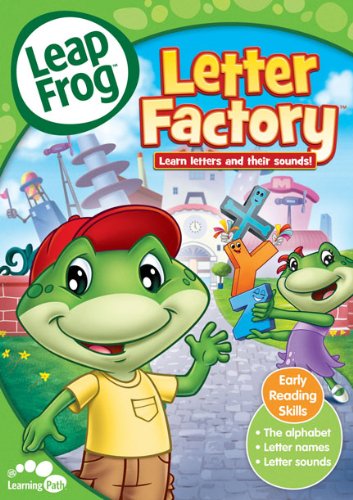
By far my favorite resource for having your child learning letters and letter sounds is the Leap Frog shows on Netflix. They include Letter Factory, Phonics Farm, and more.
If you have Netflix you can access these shows or download Letter Factory on Amazon Prime Video! My 20 month old was reciting all of the letter sounds because he loves this show so much!
Ipad educational games like ABC Mouse are great to sharpen a lot of educational skills, including learning letters and letter sounds.
My 3 year old loves ABC Mouse because of the wide variety of games and fun. She’s learning how to trace letters, numbers, make new sounds and words, etc.
Leapfrog Laptop is also a fun interactive computer that little ones can learn letters and typing on.
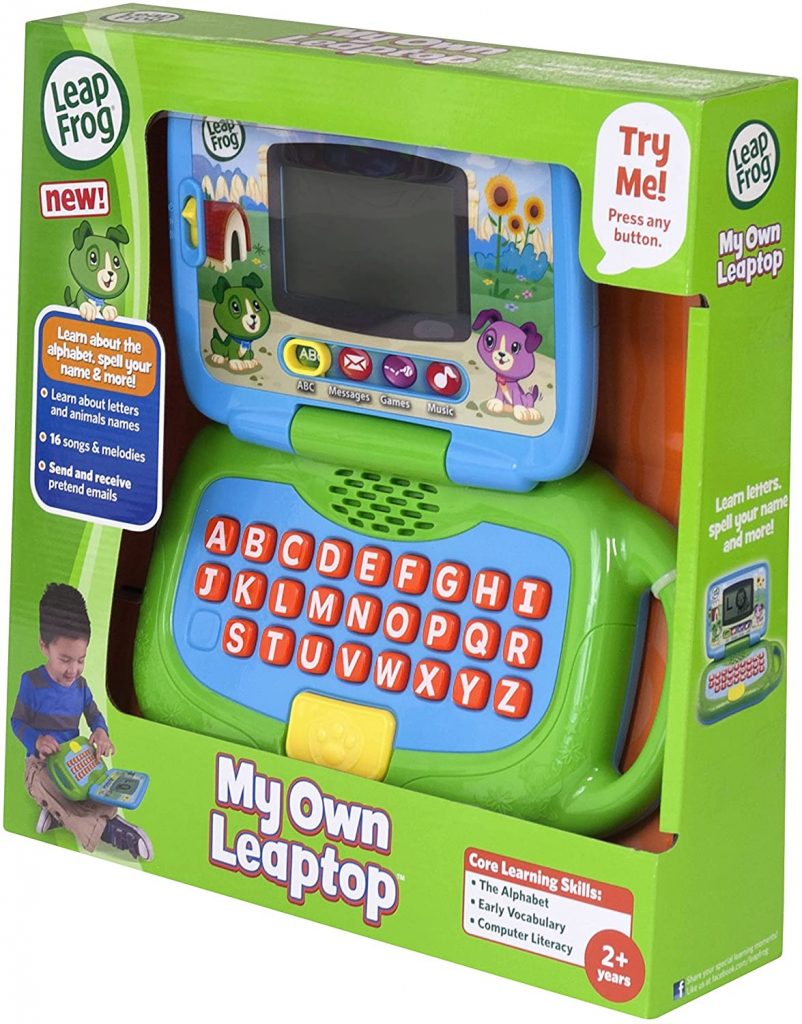
12. Sort letters
Letter sorting will be useful after the child has learned and understood the basics. As you start advancing, you can put letters in a bucket and ask him or her to pick letters A, P, F and so on.
Every time they pick the correct letter, encourage them with a clap or a song.
Another option would be for you to pick the letters and ask them to recognize them. The child needs to say which letter they picked so that next time they will remember it.
Preschoolers can learn fast if you use the right methods fit for their level. The best approach is to identify the things they love most and use them as a teaching aid.
If children love singing, they will learn letters and sounds faster while doing it. If they love Mickey Mouse, find the best Mickey Mouse tracing sheets, blocks, or letter puzzles that will help facilitate their learning.
